Nature Knows and Psionic Success
God provides
Brain-boosting nootropics: They’re not just a Silicon Valley thing anymore
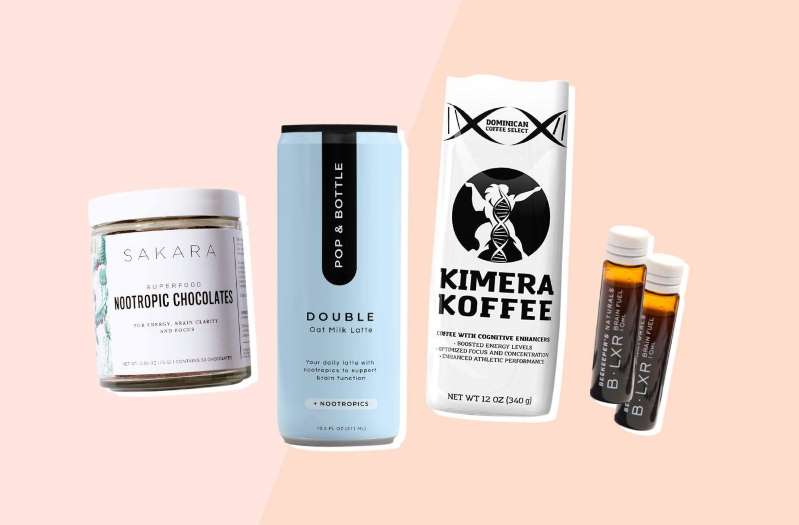
Even working at a wellness company, I’m not immune to the stresses of everyday work life: looming deadlines, overflowing inboxes, back-to-back meetings… There is always so much to do, and the inability to concentrate long enough to get everything done sure doesn’t help. So when I started hearing about a way the 24/7 worker bees of Silicon Valley were "biohacking" their brain to stay focused using something called nootropics , I worked my health writer magic and had a few brands send me some to try. For the uninitiated, nootropic supplements are cognitive performance-enhancing products made with a blend of herbs and natural brain enhancers such as bacopa , l-theanine , and ginkgo biloba —all of which have been linked to boosting focus in the present as well as supporting long-term brain health. It took a little trial and error, but once I figured out out the best way to take them, my ability to focus sky-rocketed. It was noticeable enough that colleagues started asking me to share my secrets. When we named nootropics as a 2018 Wellness Trend , the supplements were just starting to take off. A year and a half later, the brain-boosting trend has exploded beyond Silicon Valley entrepreneurs—with their benefits are now available outside of capsule form. How to Stop Hair Thinning Easy Mold Removal "Seeing this surge in the popularity of nootropics isn’t surprising to me," says Beekeeper’s Naturals co-founder Carly Stein, who created honey-tasting nootropic elixirs long before other brands jumped on board. "Modern life is hard on the brain—we could all use the extra support." Studies and surveys say she’s right: when Well+Good asked 2,700 readers about stress and anxiety , 95 percent of people said they were stressed. What’s more, multitasking reduces productivity as much as 40 percent . "True […]
Did You Know? Turmeric is Helpful, and Not Just for those with Celiac Disease and Gluten Sensitivity

In India it is a custom in Hindu marriages to hold a Haldi (turmeric) ceremony at both bride and groom’s place. Image: CC–Aritra Sen Caption: Celiac.com 04/26/2019 – Did you know that there are twenty-two benefits of the spices turmeric (which contains curcumin)? And this just isn’t just for people with celiac disease or gluten sensitivities. Look up the “ 22 Proven Health Benefits of Turmeric and Curcumin ,” last updated in February 2019. An article written by John Slaughton, BASc. BFA and reviewed by Dr. Sandesh Krishna Bhosale (BAMS), PGDHA lists these proven health benefits for people who use this supplement. Celiacs with brain for issues take note: As a powerful antioxidant herb, turmeric can stimulate neural activity and prevent cognitive degradation, which often come in the form of Alzheimer’s and dementia. In studies the herb has been shown to improve memory. Celiac.com Sponsor: Bakery On Main These spices are low cost, and you can use them to flavor soups or stews, or sprinkle them on your main meals and sandwich products. It is actually exciting to look up the health benefits of turmeric because the benefits go from helping eliminate depression, pain, protecting the digestive tract (those with celiac disease need as much help as they can get). Turmeric is closely related to the ginger plant family. It is a perennial herb native to India, derived from the rhizome of the plant. When dried it is ground up into the typical powdered form. It does need a rather specific temperature and environment to thrive, and it should never be frozen. Keep in a dry cool place, like on your spice shelf without any sunlight. Other benefits include the alleviation of pain, slowing down aging, protecting the digestive tract and preventing cancer. It does smell slightly like mustard, […]
Why we’re living in a dark age of technological distraction
Are you reading this during a work meeting? While you’re having dinner with a group of friends? Are you driving? Or is there a movie playing in the background? Even in the off chance you’re focusing exclusively on a digital device, this probably isn’t the only tab you had open. You’re getting other notifications as you read this sentence, and you’re thinking about jumping to the next article in sequence, or switching to another of your heavily-frequented apps. That’s because we’re living in a “dark age” of technological distraction. The technologies that have granted us such productivity, communicative potential, and information access are also chronically distracting us, in multiple ways, and we’re only starting to learn the devastating mental and physical consequences of this. The impact of distractions Distraction doesn’t seem like a big deal on the surface, but no matter what we’re getting distracted from, or what’s distracting us, there’s a significant cost to pay. The flashing lights and practically limitless access to information and entertainment are too much for the average person to withstand or prevent, and even a handful of distractions in the course of a normal day can be problematic. For example, a distraction while working seems relatively innocent; if you glance at your email in the middle of a project or quickly check social media to break up a meeting, it seems like you’ve only wasted a few seconds. However, research shows that after your attention is paused or pulled away from a central task, it takes the average person more than 23 minutes to fully recover from a distraction. This means every notification, every article, and every social media check could be costing you almost a half-hour of reduced focus, attention, and productivity. But distractions are responsible for more than just limiting our […]
Did You Know There’s Science Behind all those Children’s Songs?

Last weekend, my sister and I took Harlow and Neve to a free music and arts event at Kiddie Academy . If you haven’t heard of it, Kiddie Academy is a nationally recognized provider of educational child care and the event was a sneak peek into their year-round Music & More curriculum. I used to take the kids to music classes all the time when they were toddlers and it was fun to see that Harlow has still not outgrown the joy of singing along to familiar songs performed by a one-man band. I thought the kids had fun and would have left it at that, but then my sister (the school psychologist) broke down for me exactly why exposing your kids to the arts is SO important. In fact, the Music & More curriculum at Kiddie Academy was developed to improve children’s memory, cognitive development, learning skills and expressive ability. Through music and the arts, as well as a variety of other avenues, Kiddie Academy treats every experience as an opportunity for a child to learn. And here I was thinking the event was just about watching your kid dance around to Old MacDonald! I asked my sister to explain all the underlying benefits that music has on the developing brain. Not everyone knows there is actual science behind most children’s songs! Here’s what she had to say: ———————– When a parent exposes their child to music at a young age, they are probably thinking that they are helping their child develop an appreciation for music, which will hopefully inspire them to play an instrument later on. As a mom of two young children, I think this is a great reason, but since I am also a school psychologist, I know that the benefits of music far exceed […]
Brain-boosting nootropics: They’re not just a Silicon Valley thing anymore
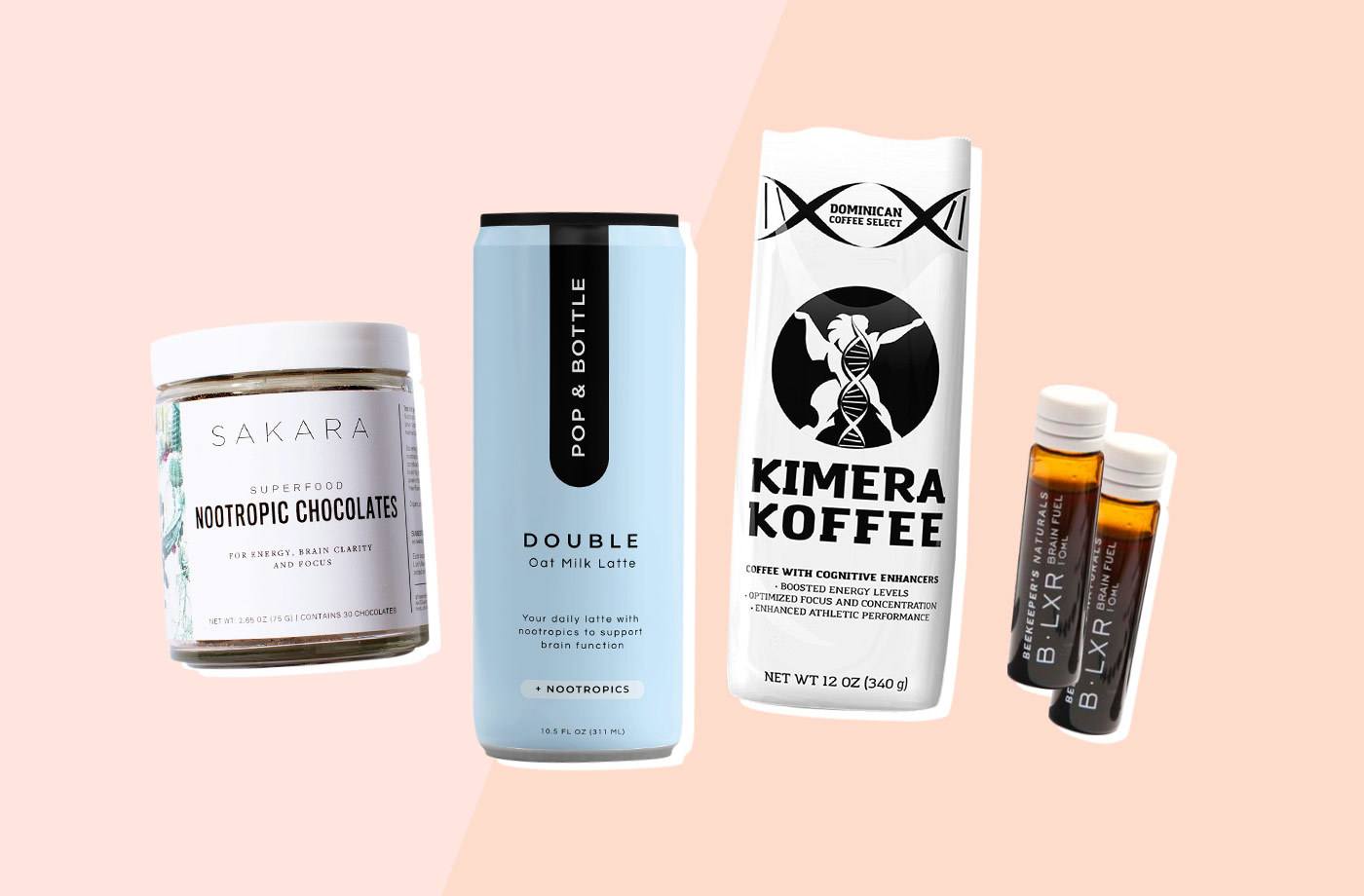
Pin It Graphic by Well+Good Creative Even working at a wellness company, I’m not immune to the stresses of everyday work life: looming deadlines, overflowing inboxes, back-to-back meetings… There is always so much to do, and the inability to concentrate long enough to get everything done sure doesn’t help. So when I started hearing about a way the 24/7 worker bees of Silicon Valley were “biohacking” their brain to stay focused using something called nootropics , I worked my health writer magic and had a few brands send me some to try. For the uninitiated, nootropic supplements are cognitive performance-enhancing products made with a blend of herbs and natural brain enhancers such as bacopa , l-theanine , and ginkgo biloba —all of which have been linked to boosting focus in the present as well as supporting long-term brain health. It took a little trial and error, but once I figured out out the best way to take them, my ability to focus sky-rocketed. It was noticeable enough that colleagues started asking me to share my secrets. When we named nootropics as a 2018 Wellness Trend , the supplements were just starting to take off. A year and a half later, the brain-boosting trend has exploded beyond Silicon Valley entrepreneurs—with their benefits are now available outside of capsule form. “Seeing this surge in the popularity of nootropics isn’t surprising to me,” says Beekeeper’s Naturals co-founder Carly Stein, who created honey-tasting nootropic elixirs long before other brands jumped on board. “Modern life is hard on the brain—we could all use the extra support.” Studies and surveys say she’s right: when Well+Good asked 2,700 readers about stress and anxiety , 95 percent of people said they were stressed. What’s more, multitasking reduces productivity as much as 40 percent . “True sustained concentration […]
Did You Know? Turmeric is Helpful, and Not Only for those with Celiac Disease and Gluten Sensitivity

In India it is a custom in Hindu marriages to hold a Haldi (turmeric) ceremony at both bride and groom’s place. Image: CC–Aritra Sen Celiac.com 04/26/2019 – Did you know that there are twenty-two benefits of the spices turmeric (which contains curcumin)? And this just isn’t just for people with celiac disease or gluten sensitivities. Look up the “ 22 Proven Health Benefits of Turmeric and Curcumin ,” last updated in February 2019. An article written by John Slaughton, BASc. BFA and reviewed by Dr. Sandesh Krishna Bhosale (BAMS), PGDHA lists these proven health benefits for people who use this supplement. Celiacs with brain for issues take note: As a powerful antioxidant herb, turmeric can stimulate neural activity and prevent cognitive degradation, which often come in the form of Alzheimer’s and dementia. In studies the herb has been shown to improve memory. These spices are low cost, and you can use them to flavor soups or stews, or sprinkle them on your main meals and sandwich products. It is actually exciting to look up the health benefits of turmeric because the benefits go from helping eliminate depression, pain, protecting the digestive tract (those with celiac disease need as much help as they can get). Turmeric is closely related to the ginger plant family. It is a perennial herb native to India, derived from the rhizome of the plant. When dried it is ground up into the typical powdered form. It does need a rather specific temperature and environment to thrive, and it should never be frozen. Keep in a dry cool place, like on your spice shelf without any sunlight. Other benefits include the alleviation of pain, slowing down aging, protecting the digestive tract and preventing cancer. It does smell slightly like mustard, but has a hot, almost pepper-like […]
An overview of Nootropics and are they safe for children?

Nootropic is a new term for most people. Many people cannot even pronounce the word let alone understand what it means. This post is a simple guide to help you understand what nootropics mean and how you can use it in daily life. Nootropics – A brief introduction Nootropics are compounds taken to improve cognitive function in humans . They were discovered around 1960, and since then they have been the subject of intense research. Scientists have observed nootropics improve the major areas of cognitive development and learning. The subject today is extensive and covers a large range of elements. Many of them still under research. It has been proved that people that take nootropics experience better learning and memory abilities. Besides the above, the consumption of nootropics has also helped people alleviate symptoms associated with Parkinson’s Disease, Alzheimer’s and Multiple Sclerosis. It also protects the Central Nervous System in the body as well as the brain. Some common examples of nootropics Nootropics are often seen as nutrients for the human body and are not unlike drugs. The following are some examples of nootropics- Aniracetam- This nootropic enhances cognitive abilities and is a stimulant. Its effects start to work within 20 minutes of intake. L-Theanine- This nootropic is found in Green Tea and reduces anxiety in people. It enhances learning and focus. Piracetam- This nootropic is the subject of extensive research and is one of the best-known nootropics for cognitive development. Pramiracetam- This is a more powerful version of Piracetam and is known for memory enhancement and learning. The above are just some of the common examples of nootropics taken by people across the world today. Note, they do have any kind of side effects or cause harm to the human body in any way. How should you take […]
Four Things You Can Do to Strengthen Your Brain
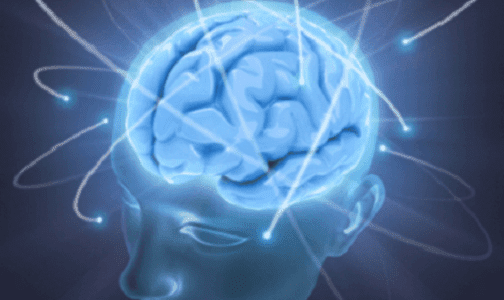
The human brain is an organ that, from youth to old age, changes and adapts constantly. This means that, if you stimulate it correctly, it’s possible to improve its cognitive ability, learn new things and to improve your memory. However, to strengthen your brain, it’s also necessary to incorporate some daily habits and exercises . The truth is that the brain is very similar to any muscle in the body . If you don’t use it and exercise it regularly, it will atrophy and lose its functional capacity. Improving your quality of life is in your hands. Therefore, you can strengthen your brain more easily and you can expand your mind . What Can You Do to Strengthen Your Brain? If you want to keep your brain strong, you should keep the following tips in mind. Take note because they can make a big difference! 1. Reduce stress. The first tip to strengthen your brain is to reduce stress. Keep in mind that many studies have shown that chronic stress can have detrimental effects on this organ . One of the best ways to avoid stress is by practicing meditation and mindfulness. All you’ll need are 10-20 minutes a day, so it doesn’t take up that much of your time. Additionally, you can include breathing exercises, meditation or yoga. Discover: What Happens When You do Regular Yoga? 2. Try cognitive training exercises. The mind stays sharp when your brain’s plasticity is nurtured. This is our brain’s ability to constantly change. This brain capacity can stay the same, and even improve, when we do cognitive training exercises. In addition, you can return to your studies or even learn a new language. Even just playing board games helps stimulate your brain and your hand-eye coordination. These hobbies provide the ability to […]
7 Coconut Oil Benefits: Liver Protection, Cancer Prevention And More
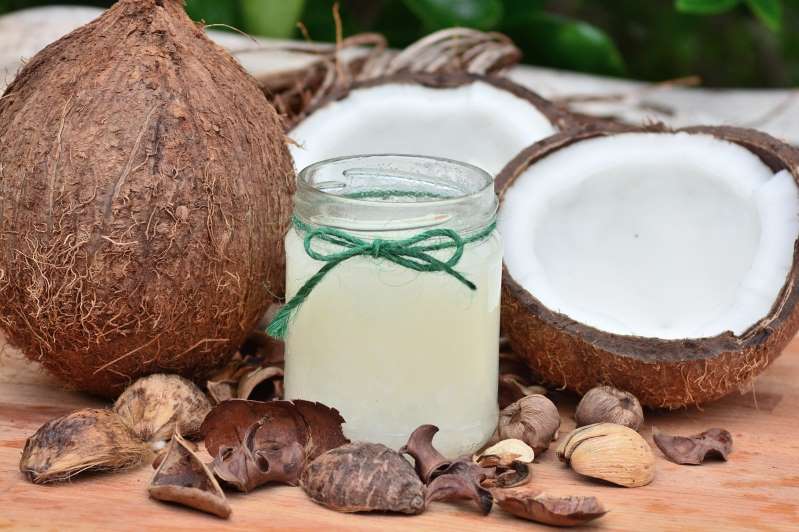
There are various scientific reasons to call coconut tree as the “tree of life.” Over the past years, more than 1,500 studies have been conducted to provide evidence that it could promote a healthy life. Part of the scientific community focused on the benefits of coconut oil. Made from copra or fresh coconut flesh, it is considered as one of the healthiest food in the world or even a superfood. Coconut oil contains healthy fats, such as caprylic acid, lauric acid and capric acid. Currently, there are a few types of coconut oil available in the market, such as the most beneficial virgin coconut oil and the refined coconut oil, which is not recommended due to the presence of potentially harmful chemicals. Coconut Oil Health Benefits 1. Protects kidney and liver Coconut oil provides a natural antibiotic that could fight UTI symptoms and kidney infections. It also directly protects the liver from damage, according to Dr. Axe . Aside from the oil extract, coconut water also helps eliminate kidney stones and facilitate the healing process. 2. Prevents cardiovascular problems Coconut oil contains high amounts of natural saturated fats, which help convert bad cholesterol into good cholesterol. That effects occurs with daily consumption of 2 tablespoons of virgin coconut oil, according to one study. Having levels of good cholesterols in the body leads to good heart health and lowers the risk of heart disease. 3. Fights cancer The people fighting cancer can add coconut oil to their diet since it can offer ketones and lauric acid — both are known for their anticancer effects. 4. Promotes better memory A study in 2004 showed that coconut oil could reduce memory problems and improve a person’s recall ability. The oil can fuel brain cells more efficiently as its fatty acids can be […]
Improve blood pressure and ease sleep apnea in just 5 minutes a day
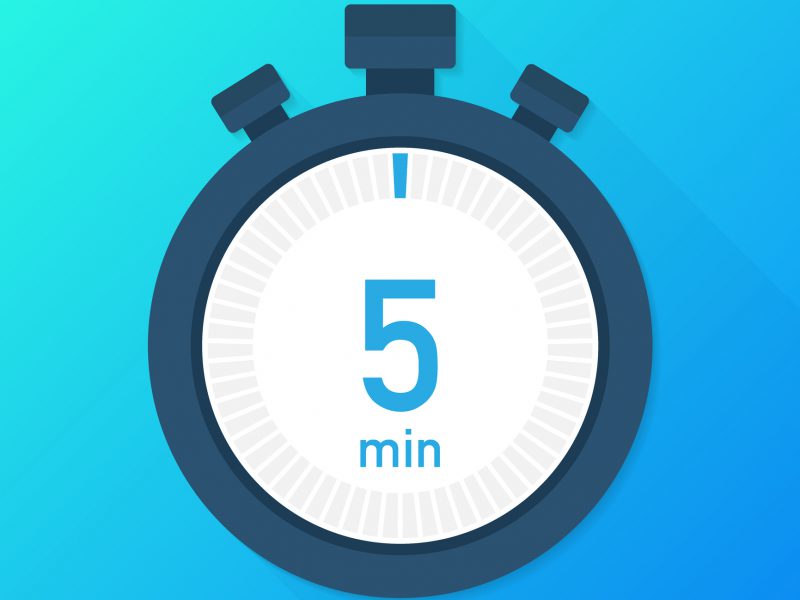
High blood pressure is one of the biggest risk factors for heart disease — the number one cause of death in America. Part of the reason is that blood pressure, especially systolic (the top number), naturally creeps up as your arteries stiffen with age — leaving you at high risk for heart attack, kidney damage, and even cognitive problems. Of course, while it’s been shown that 30 minutes per day of aerobic exercise can lower blood pressure, it can be hard to fit even that half hour a day in, which is probably why only about 5 percent of adults meet that minimum. But what if there was something far easier — a “workout” that only took 5 minutes a day rather than that 30 minutes and wouldn’t even cause you to break a sweat? It may seem like a pipe dream, but it’s now a reality thanks to researchers at the University of Colorado at Boulder. With their workout, you can realize a significant drop in your blood pressure without lifting a single weight or jogging a single step. Inspiratory muscle strength training Back in the 1980s, scientists developed a workout that would help wean critically ill people off ventilators. Called Inspiratory Muscle Strength Training or IMST , the exercise involves breathing in vigorously through a hand-held device, known as an inspiratory muscle trainer. Basically, it’s like sucking really hard through a straw that sucks back (resistance) and it helps to strengthen the muscles you use to breathe in. The patients were told to spend 30 minutes a day doing the IMST workout. But in 2016, researchers at the University of Arizona had a different idea… They wanted to see if doing just 30 inhalations a day, which takes about 5 minutes, with a higher level of resistance […]
Jumpstart a Healthier Lifestyle with These Changes

The choices you make every day have a significant impact on your health, wealth and happiness. They can also influence whether you develop illnesses and conditions such as heart disease, high blood pressure, and strokes. Most people know what they need to do to enjoy a healthier and happier life, but for whatever reason, there are still many people who haven’t done anything about it. Admittedly, changing ingrained habits such as driving rather than walking and eating unhealthy snacks often get in the way of any lifestyle changes; however, it is possible if you really want to do it. Your health and happiness aren’t going to wait while you weigh up your options. Now’s the time to do something about it. Adopt a Healthy and Nutritious Diet Making a few simple changes to your diet can have huge benefits. You’ll be pleased to learn that eating healthy doesn’t mean you have to make any radical changes or give up all your favourite foods. Sometimes, it can be as easy as switching from white bread to whole-wheat bread, taking skimmed rather than whole milk with your tea, or adding a tablespoon of ground flaxseed to your morning yoghurt. Lots of little changes can add up to big health benefits. Switching from refined grain products to whole grains benefits your body in many different ways. It lengthens your lifespan, helps to control your weight and reduces the risk of type 2 diabetes, stroke, cancer, and heart disease. Did you realise that mayonnaise is one of the worst condiment choices you can make because it’s high in calories, fat grams, and omega-6 fatty acids? Choose to spread mustard on your sandwiches instead, and you’ll trim the calories, fat, saturated fat and omega-6 fatty acids from your daily allowance. Do you enjoy a […]
CELL TOWER REMOVED FROM SCHOOLYARD DUE TO CLUSTER OF CANCER CASES

By Dr. Mercola, A cluster of cancer cases among young children at Weston Elementary School in Ripon, California, has reignited the conversation about whether electromagnetic field (EMF) radiation from cell towers might be a contributing factor. 1 In 2016, at the age of 10, Kyle Prime was diagnosed with kidney cancer. Five months later, his classmate, Mason Ferrulli, was diagnosed with brain cancer. This year, two more children at the school have received cancer diagnoses. Three teachers have also been diagnosed with various forms of cancer since 2016, along with two preschool-age children that live near the school, and a former student, who was diagnosed with brain cancer at the age of 22. 2, 3 The parents of Prime and Ferrulli believe the Sprint cellphone tower located on campus might have played a role, even though tests reveal it’s functioning normally and emitting radiation below the government standard. “It is classified as a possible carcinogen. 4 That tells us that there is some evidence out there. We’re not naive to the fact that there could be other components out there — other environmental influences… but the bottom line that we feel in regards to this tower is it doesn’t belong there… if there’s any indications that its unsafe,” Monica Ferrulli told CBS News. 5 Cellphone Radiation Safety Guidelines Are Outdated Indeed, for those of you who are familiar with the health effects of EMFs and the way the government safety standards are set, such results are little proof of safety. As noted by Joel Moskowitz, director of the Center for Family and Community Health at UC Berkeley (an area that has taken a stricter stance on EMF awareness and safety), the U.S. Federal Communications Commission’s (FCC) “guidelines for cellphone radiation adopted in 1996 are outdated and were mostly based […]
Easy Tips To Boost Intelligence

The brain is the center of the nervous system and it helps the entire body to function, to be able to take responsibility of day to day lives the brain is said to take energy for its own purposes before distributing it to other body parts, called selfish brain prioritization. Initially this selfish brain prioritization theory was used to gather information on obesity, but now it’s also connected to how the brain functions to support bodily activities. University of Cambridge researched tested this theory by asking a team of rowers to simultaneously do memory tasks while doing physical rowing; results showed participant physical ability was significantly lower than memory performance while doing the test. Researchers concluded while the rowers were multitasking the brain did take more resources to be able to function better. Findings suggest as the brain can demand resources we may not have an innate level of intelligence. As the brain does take the energy it needs first from the body’s resources, it may be possible that energy can be used to continue to improve cognitive abilities into adulthood. Exercise and eating well provide the body with nutrients and activity to keep the body and mind healthy. The link between food intake and brain function has been explored and well established. Exercise routines like 30 minute moderate intensity aerobic sessions have been shown to increase neuroplasticity which is responsible for the ability to learn new things. Providing a goal to achieve a certain level of intelligence can be helpful for motivation; never think that your IQ level will remain the same throughout life, rather think of it as a work in progress that it can be improved through constant learning and experience. Mycibacterium vaccae a natural bacterium found in dirt has been shown to effectively increase cognitive […]
The Physiology of Stress and How to Manage It

You’ve likely experienced the effects of stress—sweaty palms, racing heart, shallow breathing—and are familiar with the sense of overwhelm it can bring. The stress response is part of the “fight or flight” mechanism that has helped our species thrive. However, the demands of modern life make this adaptive response problematic for our long-term well-being. This article explores the physiological underpinnings of stress, its impact on various bodily systems and useful strategies for navigating it. Stress 101 The body’s stress response is governed by the sympathetic nervous system. When faced with acute danger, your body responds with a cascade of physical and hormonal changes that prepare you to respond. Some of these changes include: Increased blood pressure and heart rate A surge of the hormones epinephrine, norepinephrine and cortisol Reduced blood flow to visceral organs and increased blood flow to musculoskeletal system Heightened muscle tension Inhibition of immunity, digestion and reproductive functions (Sapolsky, 1994) When confronting immediate, life-threatening danger, these physiological responses are protective. They help mobilize the body’s available resources to increase the chance for survival. Anything not immediately necessary, such as growth, digestion and reproduction, gets downregulated. Unfortunately, when the perceived threat is no longer acute, but stems from constant daily pressures, these responses can threaten your well-being. Eventually, the body’s stress response may wreak more havoc than the stressor itself, impacting numerous health outcomes (American Psychological Association, 2019). Chronic Stress and Weight There is a strong correlation between high stress levels and increased weight (Harding et al., 2014; Block et al., 2009). A variety of factors underlie this relationship. While some of the hormones associated with the stress response inhibit hunger, others increase it. Cortisol typically spikes in the latter parts of the stress response and stays elevated during the recovery phase. This hormone increases hunger and […]
Music therapy provides perfect pitch for wellness
Using the power of music to get better, both mentally and physically, and live well can pay rich dividends, writes Rashmi Ramesh A nine-year-old, who’d never uttered a word all his life, spoke for the first time during a music session. His first word was “open”. Diagnosed with autism, the boy had been non-verbal until then. The development came as a pleasant surprise to Purvaa Sampath-currently India’s only CBMT (Certification Board for Music Therapists)-certified music therapist and neurologic music therapistwho was an intern at the time. “With that boy, my supervisor and I had developed a song where he would knock on the drum when we prompted him to. I was leading the session and began the song. When I got to the part about knocking, the song went ‘Who’s that knocking on the door?’ and instead of just knocking on the drum, he looked straight at me and said the word ‘open’. That was the first time he’d ever said a word and it was a huge moment for me, my supervisor, his teacher as well as his family. And this word came after months of music therapy,” Sampath said. With music therapy, consistency, patience and practice are key, according to her. Akanksha Pandey, consultant clinical psychologist at Fortis Hospital in Bengaluru, said music is an expressive therapeutic tool that helps people improve their physical and mental health – it relaxes the mind and has a functional effect on the brain. “The therapeutic role of music has been recognised since ancient times, through texts such as Raga Chikitsa, and has the support of current research as well, which talks about the physiological benefits of music on the immune system, the benefits of music for relaxation and stress management, the application of music to improve memory and attention, as […]
MCT oil: The brain-boosting and weight loss-promoting extract you should know about
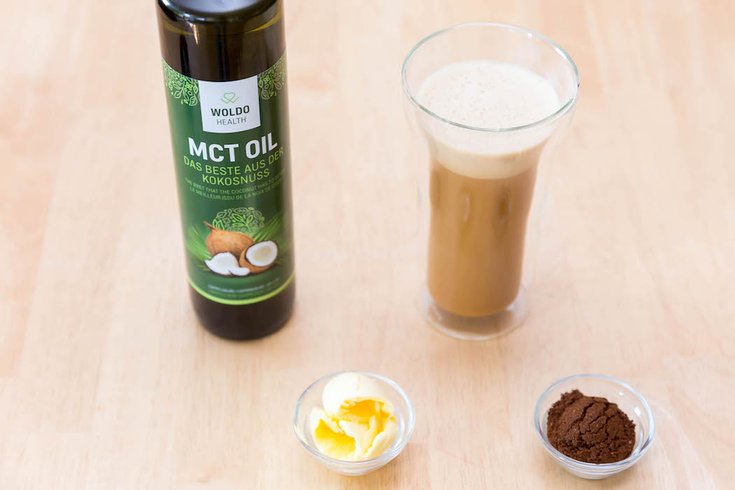
MCT oil is a main ingredient in the popular bulletproof coffee wellness beverage. Maybe you’ve come across MCT oil in your wellness literature travels (like when reading about bulletproof coffee ), or maybe you haven’t. Either way, we’re here to tell you what it’s all about. MCT stands for the very scientific term “medium-chain triglyceride,” which means that fats, because they’re shorter in length, are more easily digested and tied to a whole slew of health benefits, according to Healthline . MCT oil is a coconut oil extract, with MCTs making up more than half of the fat in coconut oil. RELATED READ: No, drinking kombucha doesn’t ‘speed up’ your metabolism, experts agree According to Medical News Today : MCTs are found in coconut oil and are processed by the body in a different way to long-chain fatty acids. Unlike other fats, they go straight from the gut to the liver. From here, they are used as a source of energy or turned into ketones. BENEFITS Here’s where the health benefits begin to kick in. Ketones, created when the liver breaks down a lot of fat, can be used as fuel for the brain instead of sugar, according to Medical News Today, which explains that the the calories found in MCT oil are used immediately, meaning that it is highly unlikely that they’ll be stored as fat. Preliminary research suggests the oil might have promising effects on the brain function and memory in those with Alzheimer’s disease, Medical News Today reported. The Alzheimer’s Drug Discovery Foundation adds that it is also thought to potentially prevent Alzheimer’s and even enhance learning capabilities. Healthline notes that MCT oil may be beneficial for children with autism. Some studies have shown promise that higher-fat and gluten-free diets can improve behavior in autistic children […]
What You Need to Know about Olive Oil: One of the Healthiest Fats in the World
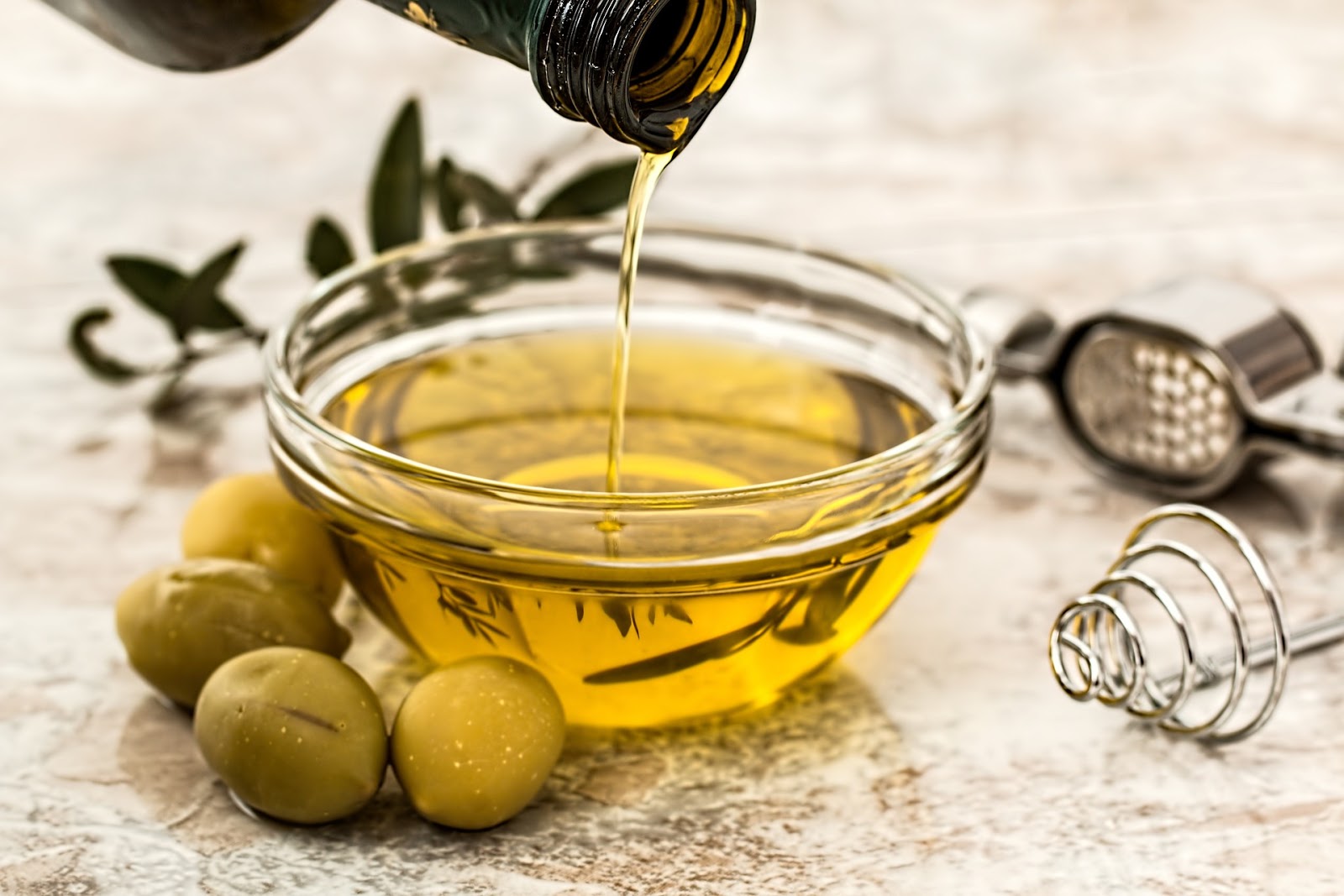
For years, a low-fat diet has been advised as a way to improve health and reduce the risk of a multitude of diseases. But when you reduce your fat intake too drastically, you can end up with the very health issues you were trying to prevent. In all likelihood, you cut back on both good and bad fats. Adding olive oil to your grocery list adds a good fat to your diet. A healthy amount of fats in our diet is vital for overall health. Did you know that your brain is 60-percent fat? Fatty acids help our bodies function down to the cellular level. The World Health Organization recommends that fats make up 20-35 percent of our total calories per day. But you don’t want to eat just any fat — you need quality fats. One of the healthiest sources of fat is olive oil. What is olive oil? Olive oil is an omega-9 fatty acid high in healthy, monounsaturated fat, particularly in oleic acid. Oleic acid has powerful anti-inflammatory properties. Intake of oleic acid has been proven to lower blood levels of C-Reactive Protein, an inflammatory marker showing the level of inflammation within the body. The monounsaturated fats lower low-density lipoprotein (LDL) ― bad cholesterol levels in the blood — and raise high-density lipoprotein (HDL) ― or good cholesterol levels. It also contains oleocanthal, a natural anti-inflammatory compound. It has a potency similar to ibuprofen and works in a similar way. Both are strong anti-inflammatories and pain relievers. The amount of oleocanthal you ingest from olive oil is much less than the corresponding dosage you’d get from ibuprofen, but long-term consumption is still believed to reduce your risk of many diseases. A diet rich in this oil delivers health benefits comparable to non-steroidal and anti-inflammatory medications. You’d […]
Days Gone Is Interesting But Impossible to Take Seriously

In Days Gone, users play as Deacon St. John, a drifter/bounty hunter who lives on the road. The loading icon in Days Gone is an in-game model of a ring. It appears whenever the game’s surprisingly frequent loading screens appear, spinning in the bottom right corner with a silver sheen. It’s a symbol the game treats with a good deal of reverence. Given to the (apparently) deceased wife of the biker protagonist before her death, it’s something of a leitmotif—always there, lingering just outside of immediate memory. But it’s also a gaudy thing, a self-consciously edgy trinket, shaped like the skull of some dead animal. Days Gone is sincere in its reverence of this object, and the relationship it symbolizes, but it’s also a little tone deaf. Days Gone is so immersed in its own world that it fails to realize how silly it looks. That sense permeates Days Gone , the new game from developer Bend Studio. Exclusive to the PlayStation 4, it’s a game that exists within a familiar form, set in a vast open world teeming with various hostile factions, including a seemingly infinite horde of zombies (called "freakers," which, OK, sure). It is more interesting than it initially appears, but it’s also a little much. It’s a game entirely reverent of the world it creates, but without seeing how that world, well, maybe is a good deal sillier than the game would like you to think. Days Gone is the story of Deacon St. John, a biker who formerly ran with a fictional gang called the Mongrels. After a zombie apocalypse ravages his world, he lives in Oregon with his best biker buddy, Boozer, and the two survive as nomadic guns-for-hire, doing odd jobs, taking bounties, flitting between various fenced-in survivor camps. It’s nothing fans […]
India- USA Hemp is now offered Nationwide Through Mr. Checkout’s Direct Store Delivery Distributors.
(MENAFN – GetNews) USA Hemp’s seed to shelf CBD products now available Nationally through Mr. Checkout. When you use USA Hemp, you’re using True Organic hemp directly from the source. We skipped the synthetic additives and chose to stick with pure, all-natural hemp. From seed to shelf we’re there every step of the way to make sure our customers can count on the fact that when you use USA Hemp, you’re using true, organic hemp, directly from our farm to you. Our Genetics: GOLDEN REDWOOD From USA Hemp’s proprietary breeding program comes Golden Redwood, a high CBD cross between Sour Tsunami and Cannatonic. Its relaxing effects are subtle, providing a calming experience that eases the muscles into relaxation without mental cloudiness. CAROLINA DREAM With an earthy smell and hints of lavender, Carolina Dream is a heavy hybrid that has been known to provide relief to a variety of symptoms, some of which include insomnia, stress, and aches. Bred from Cannatonic & AC/DC this strain combines the best of CBD to provide fast and flavorful relief. WILD BOURBON Wild Bourbon is a sativa-dominant hybrid bred by USA Hemp for its low THC percentages and uplifting effects. A cross between AC/DC and Sour Tsunami, Wild Bourbon’s high CBD percentage in some cases reports of helping treat anxiety, pain, inflammation, and maintain homeostasis, all with a clear head. Products Tinctures: Oregon Strawberry. A healing blend of CO2 extracted full spectrum CBD oil, MCT oil, and strawberry flavor for a convenient way to get your daily dose of CBD. Use sublingually for maximum CBD absorption. Vanilla. A healing blend of CO2 extracted full spectrum CBD oil, MCT oil, and vanilla flavor for a convenient way to get your daily dose of CBD. Use sublingually for maximum CBD absorption. Blueberry. A healing blend of […]
Tried garlic oil and flaxseed oil yet?
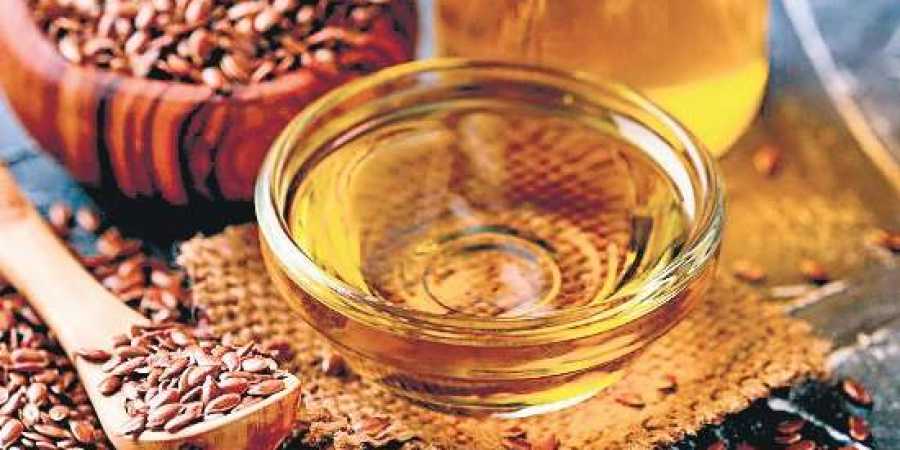
By Express News Service HYDERABAD: Rooted in the Vedic culture of India, Ayurveda is a five-thousand-year-old science of natural healing and wellness. Ayurveda examines the human body and its requirements for healthy living. This study has led to the discovery of three elemental bodily Doshas called Vata (Air), Pitta (Fire) and Kapha (Water). Ayurveda studies suggest that the balance of these three elements lead to health and wellness while imbalance causes ailments and diseases. Naturally extracted oils are one of the most recommended products in therapeutic and preventive use. Unlike massage and essential oils, Ayurveda oils are specially crafted medicinal substances used both internally and externally to promote health, beauty and wellness. These oils are necessary because of their therapeutic and preventive properties. Intake of these health oils result in ‘Ojas’ (Generative Power). Abundance of Ojas keeps one healthy and promotes beautiful skin and hair. Ojas is sustained in part by having a balanced level of oil and healthy fats in your body. Though most of us are aware of the commonly used oils like Coconut, Sesame, Groundnut and Mustard there are many elixirs that effectively assist in everyday ease and healing. Below mentioned are a few oils to add to your daily routine which will help you reap the maximum benefits of Ayurveda for a healthier lifestyle. Nigella Oil Known as Blackseed, Krishna Jeeraka or Kalonji, this seed is largely cultivated in the eastern part of the world for its history of therapeutic uses. High in nutrients, Blackseed has often been referred to as ‘the remedy for all.’ Its antioxidant properties and rich supply of polyunsaturated fatty acids play a key role in daily health and wellness. This oil supports liver detoxification and curbs gallbladder inflammation. It also helps reduce digestive problems and is effective in easing conditions […]
